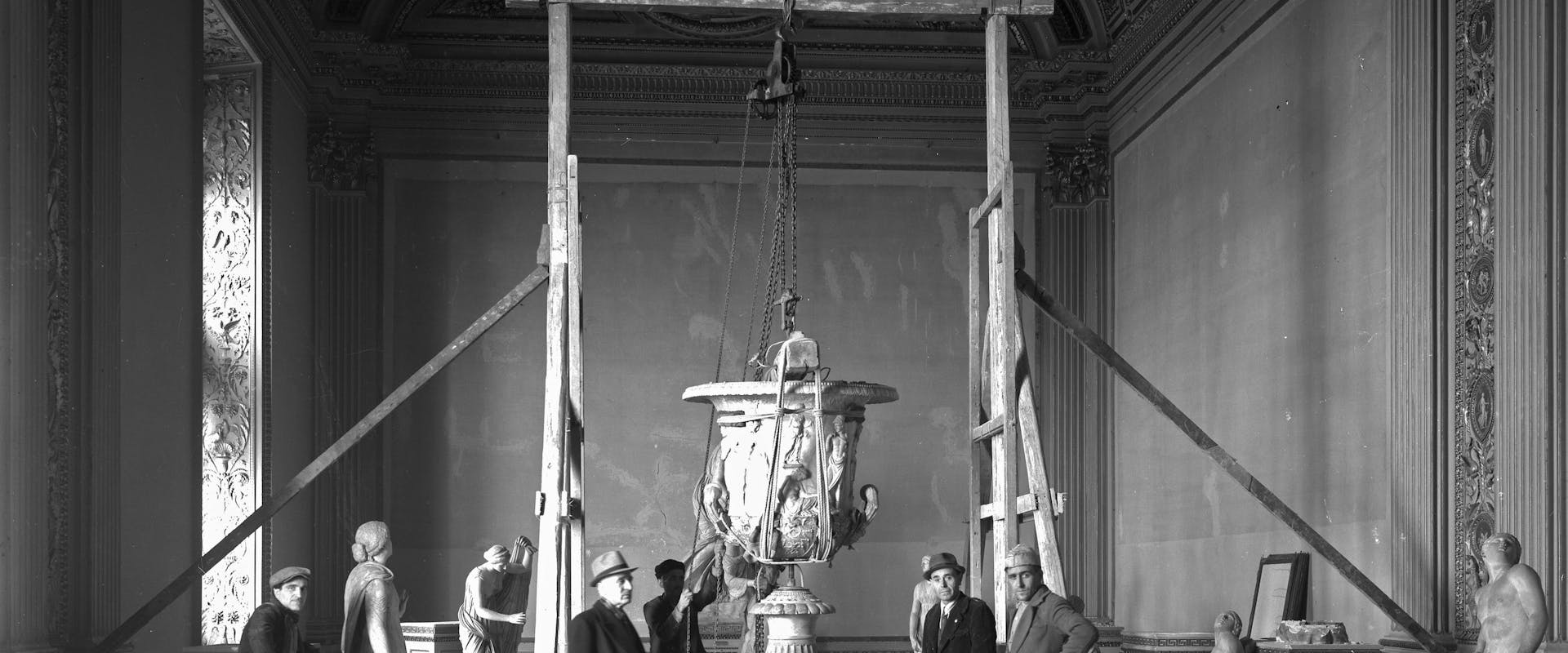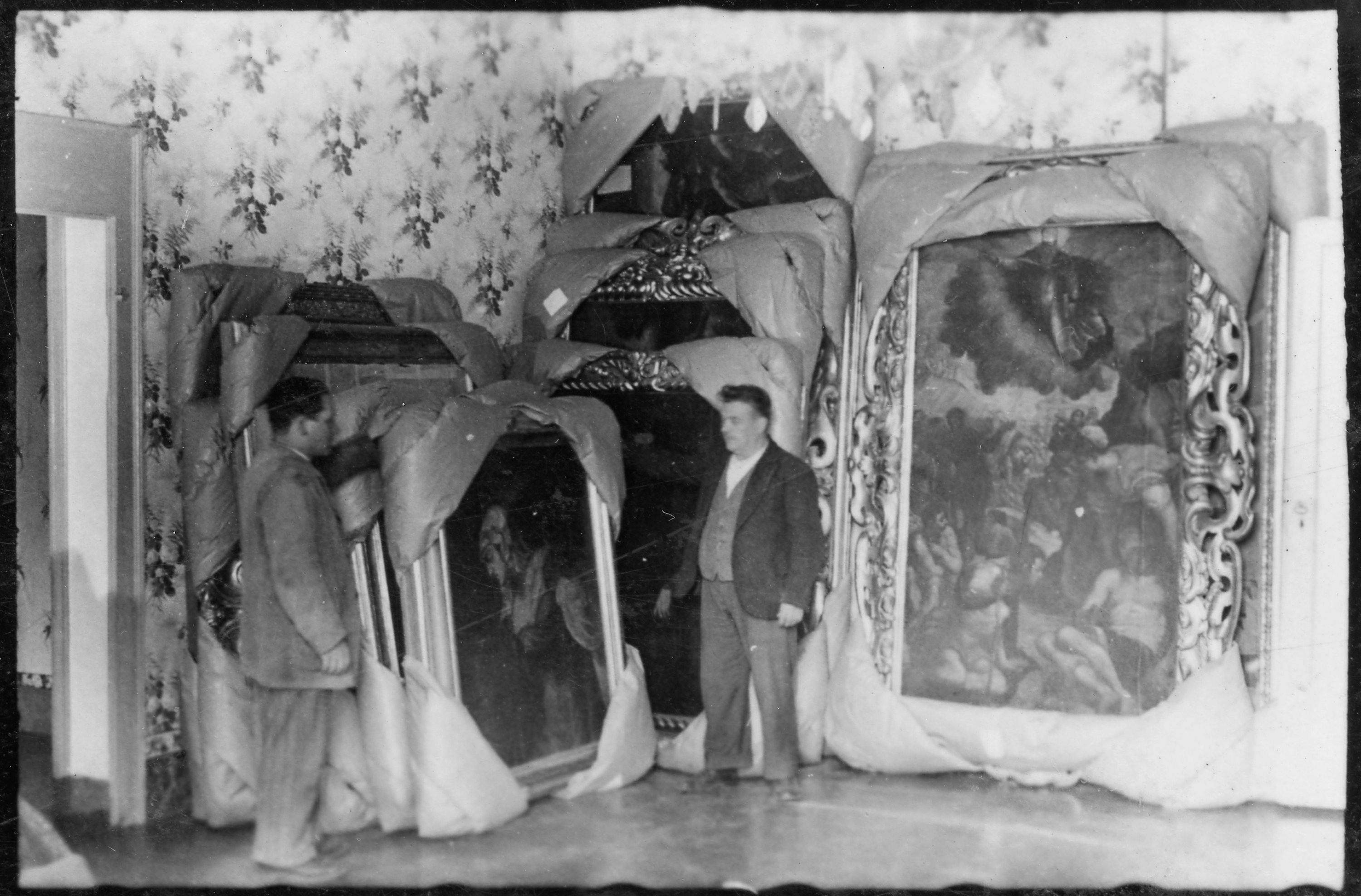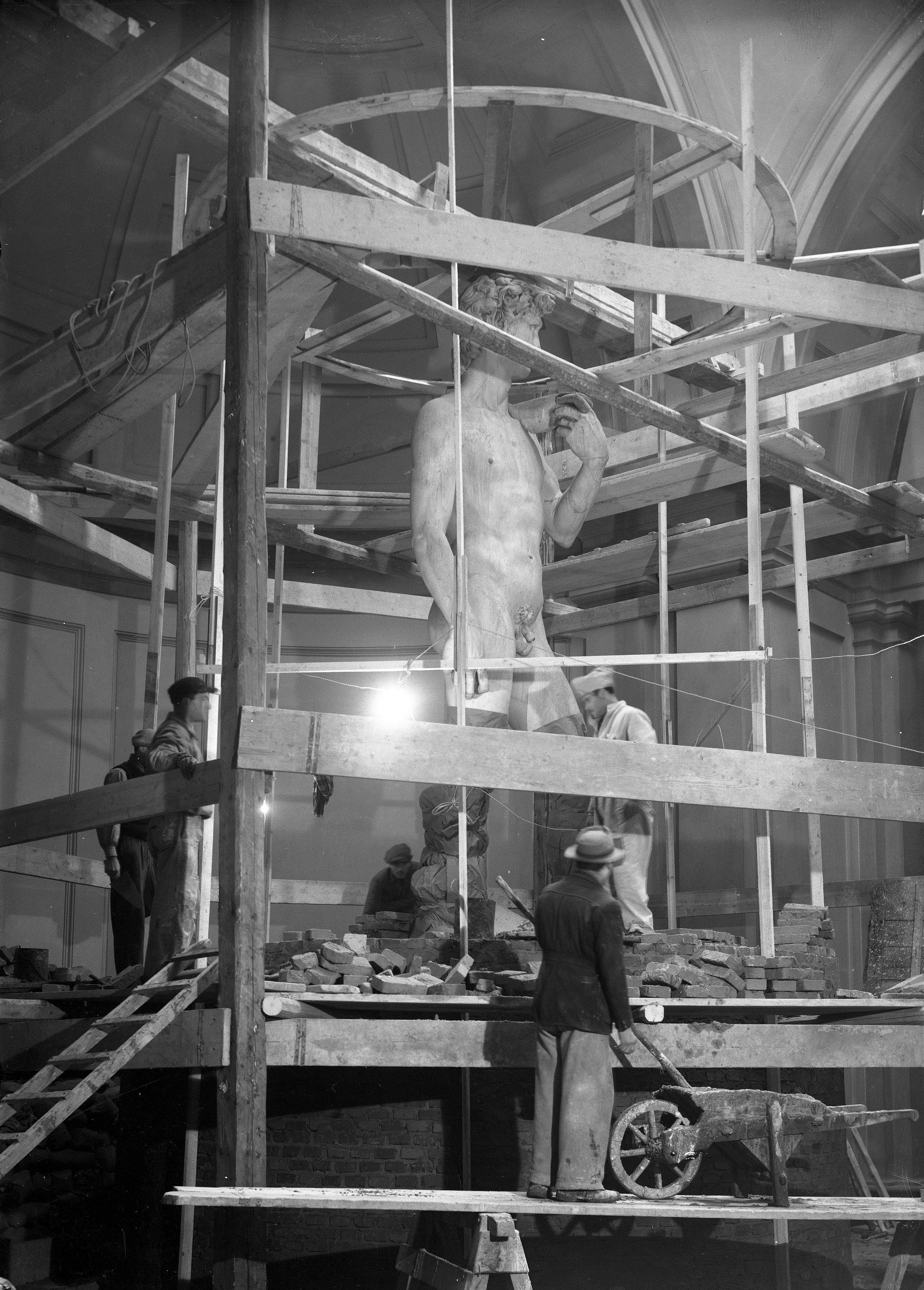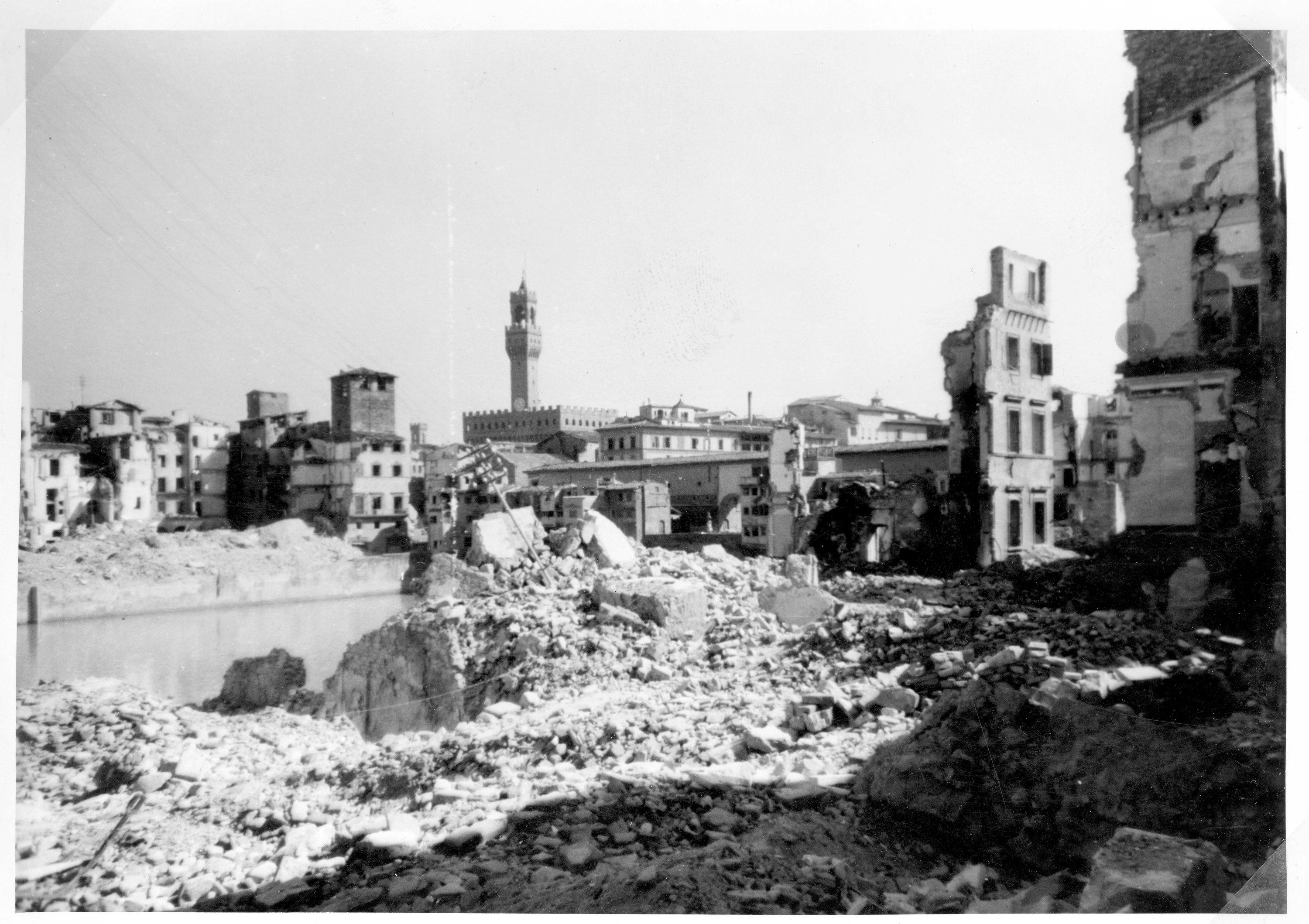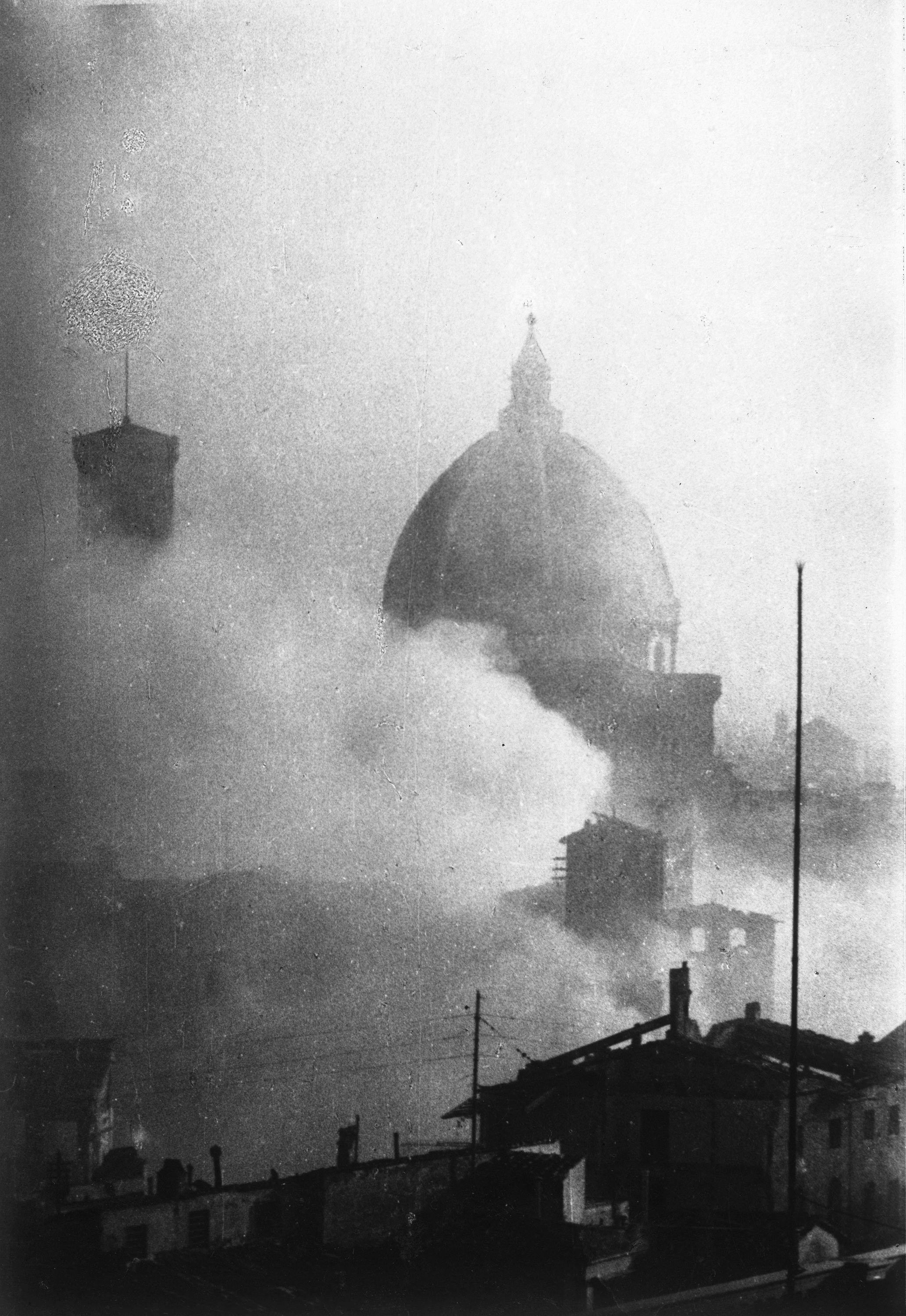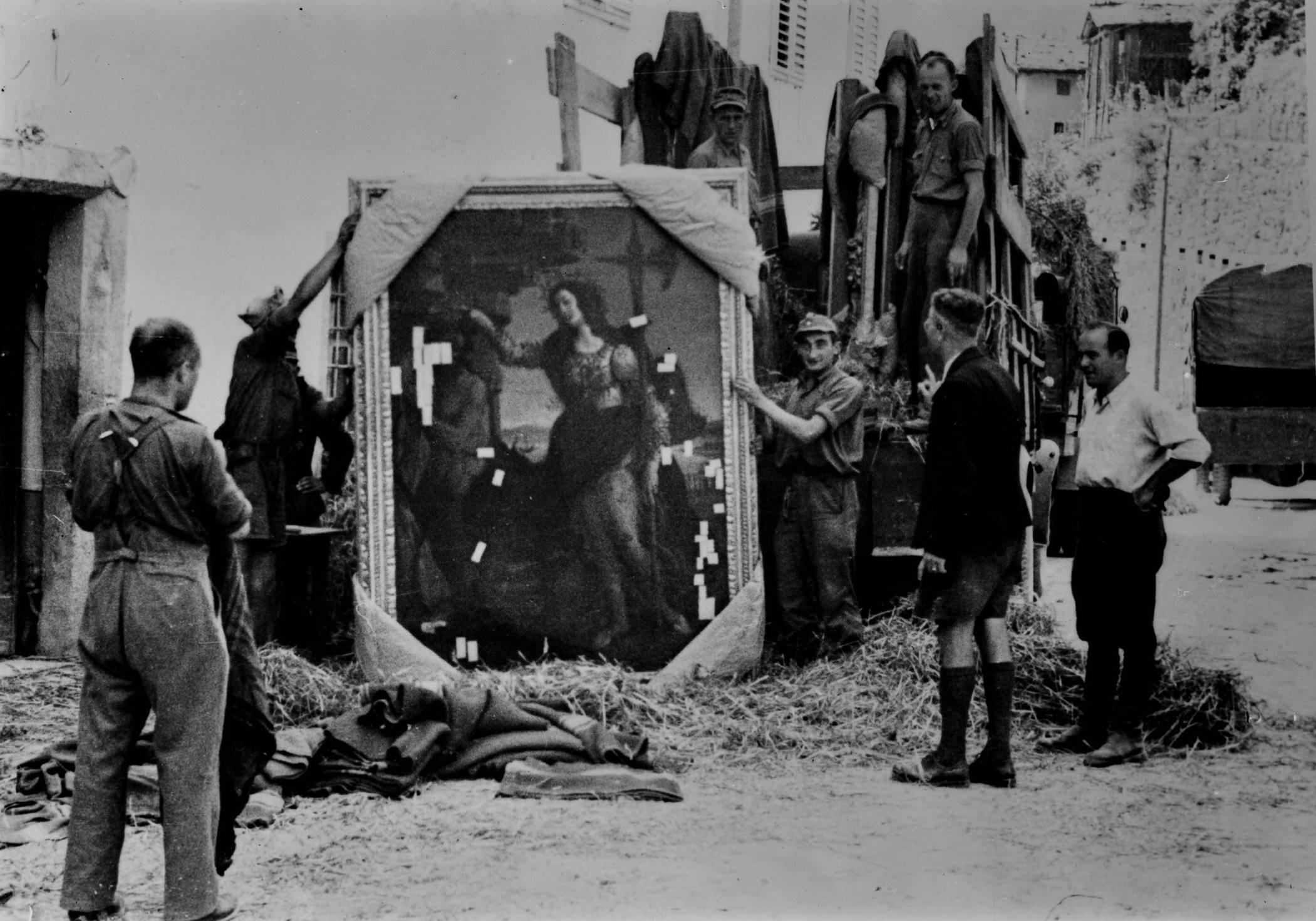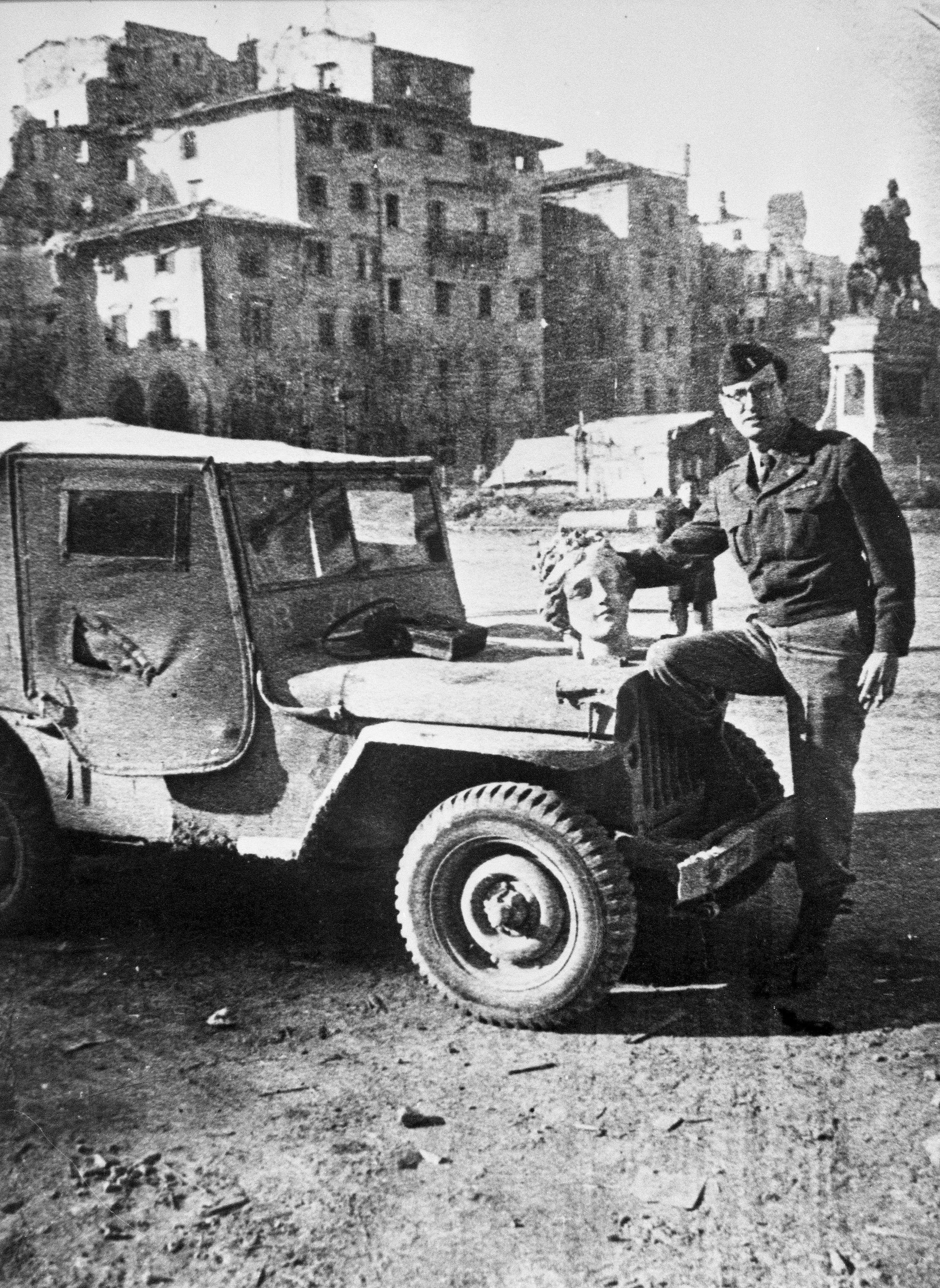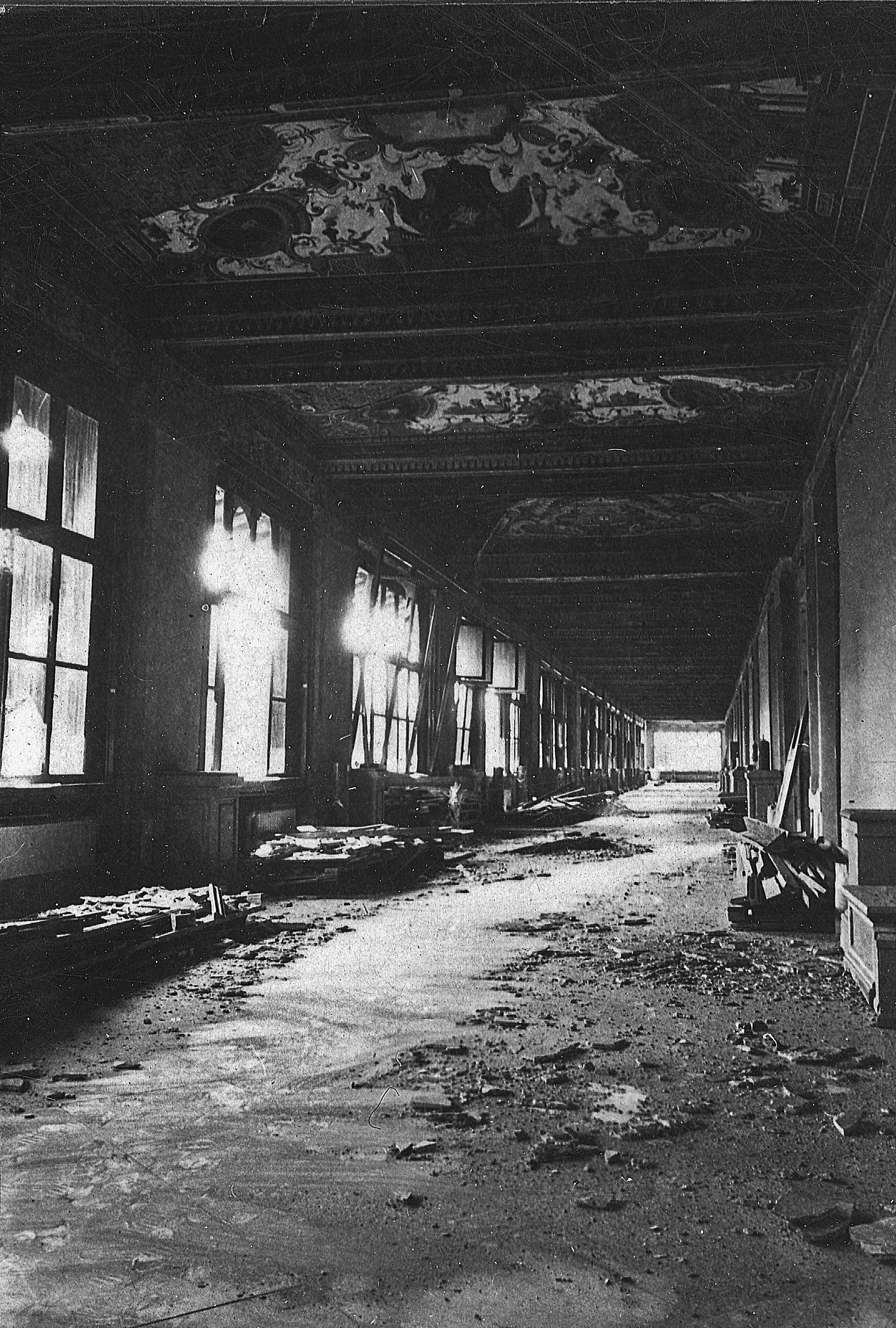The Florentine artistic heritage and the Second World War
It is 80 years since the Liberation of Florence from Nazi-Fascist occupation and the Uffizi Galleries commemorate the history of cultural heritage during the war.
We retrace those years and events through the collection of images from the Photographic Department. We also invite you to learn more about the history of Pitti Palace as a shelter for displaced persons in the city centre with the hypervision '29 July - 4 August 1944. The Republic of Pitti' and the information sheet dedicated to the 'War Damage' photographic collection.
On 10 June 1940, Italy entered the war on the side of Germany. Emergency protocols for the protection of works of art were immediately triggered in museums, churches and palaces. From July, transportable works were packed up to protect them from bombing and taken to shelters considered safer: underground storerooms such as the one under the Loggia dei Lanzi that housed Cellini's Perseus, or villas and castles in Tuscany, such as the Palazzo Pretorio in Scarperia, the Medici villas of Poggio a Caiano and Petraia, but also the monastery of Camaldoli, the castles of Poppi, Montegufoni, Poppiano, the villas of the Guicciardini family, the villas of Torre a Cona, Montagnana, or even places requisitioned for the purpose (the Oratory of Sant'Onofrio in Dicomano, the Sant'Antonio railway tunnel in Incisa Valdarno, the Medici villa in Cafaggiolo or Villa Demidoff in Pratolino). From 13 to 28 June, 550 paintings and sculptures from the Uffizi, including the Medici Venus, left the museum to find shelter at Poggio a Caiano
The works that could not be moved (frescoes and decorations in churches and palaces, portals, fountains...) were enveloped to contain the damage from possible explosions, with paper or cloth coverings, sandbag barriers held up by scaffolding or even brick walls, as in the case of the David at the Accademia.
Giovanni Poggi, superintendent of the Galleries (as the ministerial institute was then called) from 1925 to 1949, and Ugo Procacci, at that time an official and head of the Restoration Laboratory, were the protagonists of this massive work of prevention.
With the armistice of 8 September 1943, Italy was occupied by the Germans who, with the advance of the Allied troops from the south, began to use the cities as shields. Florence was no exception and, having been refused the open city status, was occupied by Nazi troops as early as 11 September 1943. The Anglo-American allied troops arrived in Florence in August 1944; Allied bombing had already destroyed the railway lines and several neighbourhoods near the centre (Campo di Marte, Piazza Edison...), while German mines destroyed the bridges over the Arno. Attempts by Cardinal Elia Dalla Costa and the German consul in Florence to spare at least the 16th-century Ponte Santa Trinita were futile, and on the night between 3rd and 4th August, the bridges were mined and destroyed, with the exception of the Ponte Vecchio, but to spare it, the neighbouring areas were razed to the ground.
A large number of shots testify to the destruction of those months. A series of images captures, from Pitti Palace and Piazzale Michelangelo, the moment of the mine explosion that destroyed the bridges and an important portion of the historic centre on 4th August: Por Santa Maria, Lungarno Acciaioli, Borgo San Jacopo, Via dei Bardi, Via Guicciardini, along with the destruction of the ancient medieval towers...
28 shots taken by an AMG (Allied Military Government) aircraft follow the entire course of the Arno from above after bombardments and mines.
In the same days, German troops seized works of art from museums and shelters and transported them on military trucks to two warehouses beyond Bolzano: this involved 58 crates with works of all kinds, more than 300 paintings stolen from the Uffizi and the Palatine Gallery, sculptures such as the Medici Venus, as well as works raided from the shelters in Montagnana, Poppi and Barberino for a total of 527 stolen paintings. They were destined to form the Führermuseum in Linz.
On 11 August at 6.45 am the bell of Palazzo Vecchio rang and the partisans attacked the Germans at Campo di Marte and the Cascine: it was the beginning of the end of the occupation.
After the German surrender, 400 crates with works were handed over to the Allies and returned to Florence. The return was supervised by Uffizi Director Filippo Rossi and Lieutenant Frederick Hartt, an American art historian who had played a leading role, together with the Florentines, in the preservation and recovery of the heritage and left a record of that period in the volume 'Florentine Art under Fire' (1949). On 21 July 1945, a solemn ceremony in Piazza della Signoria welcomed the works. Numerous shots by Lieutenant Hartt himself document these moments, just as others recount the operations to recover the works from city shelters, such as the one that, under the Loggia dei Lanzi, had protected Cellini's Perseus.
A large amount of documentation also concerns the removal of rubble and the recovery of fragments of the Ponte Santa Trinita, which soon became the symbol of the city's desire to emerge from the tragedy of war.
After the emergency management of the refugees (many housed inside the Pitti Palace: ‘29 July - 4 August 1944. The Republic of Pitti') and the construction of temporary bridges over the Arno, the reconstruction of the cultural heritage was addressed. A commission dedicated to the artistic parts of the destroyed areas made an appeal for photographs and drawings of the buildings before August 1944; the collected material was displayed in an exhibition inaugurated on 11th August 1945 at Palazzo Strozzi. In 1947, a committee was formed for the reconstruction 'as it was, where it was' of the Santa Trinita Bridge, which was to be inaugurated on 16 March 1958. The four early 17th-century statues representing the Seasons, placed at the ends of the bridge, had also been relocated. The Spring, a work by Pietro Francavilla (1590-1610c.), was, however, missing its head: the search for it went on for another three years until it was found in the bed of the Arno river and reintegrated in 1961.
In June 1946, the Palatine Gallery and the Royal Apartments in the Pitti Palace, the San Marco Museum, the Bargello and the Accademy Gallery reopened. At the Uffizi, the war damage was substantial and mainly affected the part of the east corridor towards the Arno river and the adjoining rooms, as well as the Vasari Corridor. Major renovation and restoration work began, which is also documented in the archives of the Photographic Department.
